Abstract
The production of experimental cirrhosis in the rat, most commonly by multiple doses of carbon tetrachloride (CCl4), is a difficult process with a low yield of "cirrhosis" of widely varied histology. This is due to an unpredictable variation in the response of the rat liver to CCl4, and the lack of a reliable method of monitoring the rapidly changing liver damage with each dose. A simple non-invasive method is described in which the daily body weight change of the rat in response to weekly intragastric doses of CCl4 has been shown empirically to sufficiently reflect the state of the liver as to enable each dose of CCl4 to be calibrated by the weight change of the previous dose. The death rate is markedly reduced and a critical level of liver damage can be maintained. This improved control over liver damage has made it possible to produce a high yield (72%) of a standardized decompensated micronodular cirrhosis with 8-10 doses of CCl4. Under these weight-calibrated conditions this point is determined non-invasively by using a visual grading of a critical level of ascites estimated during light halothane/oxygen anaesthesia to relax the abdominal musculature.
Full text
PDF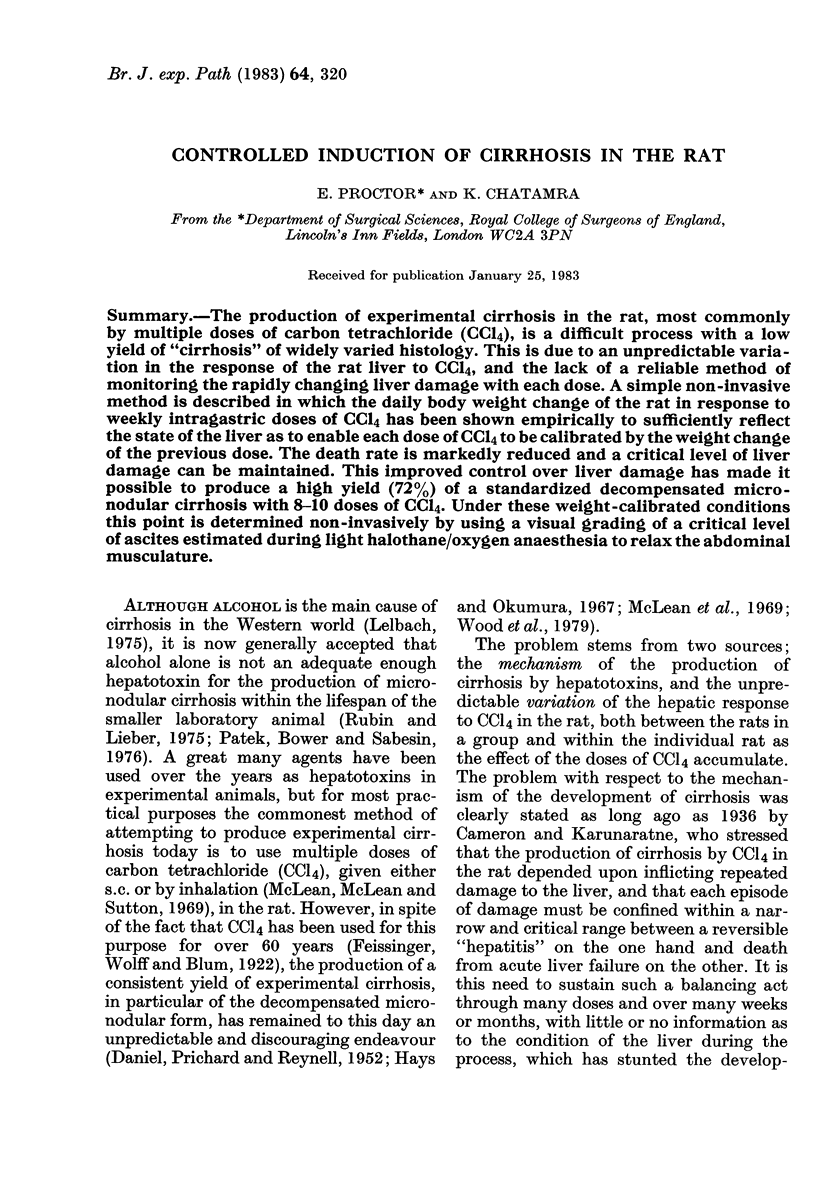
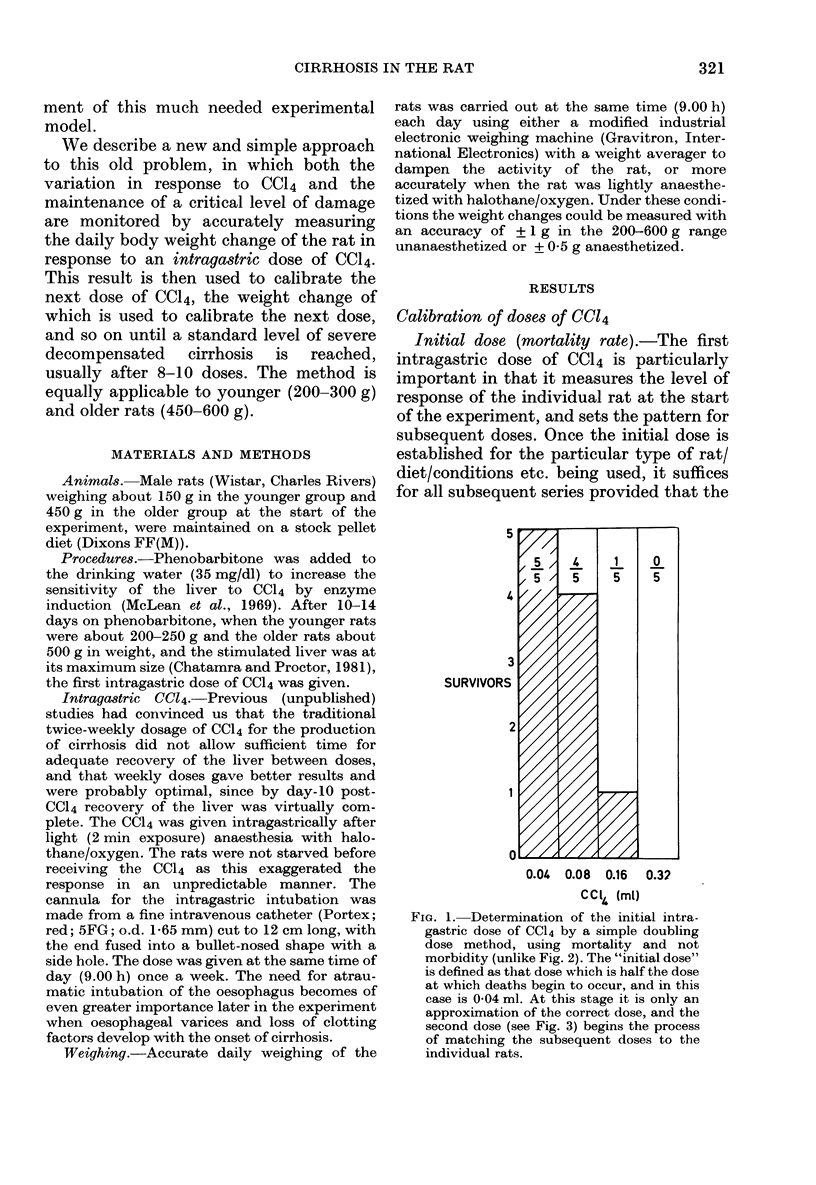
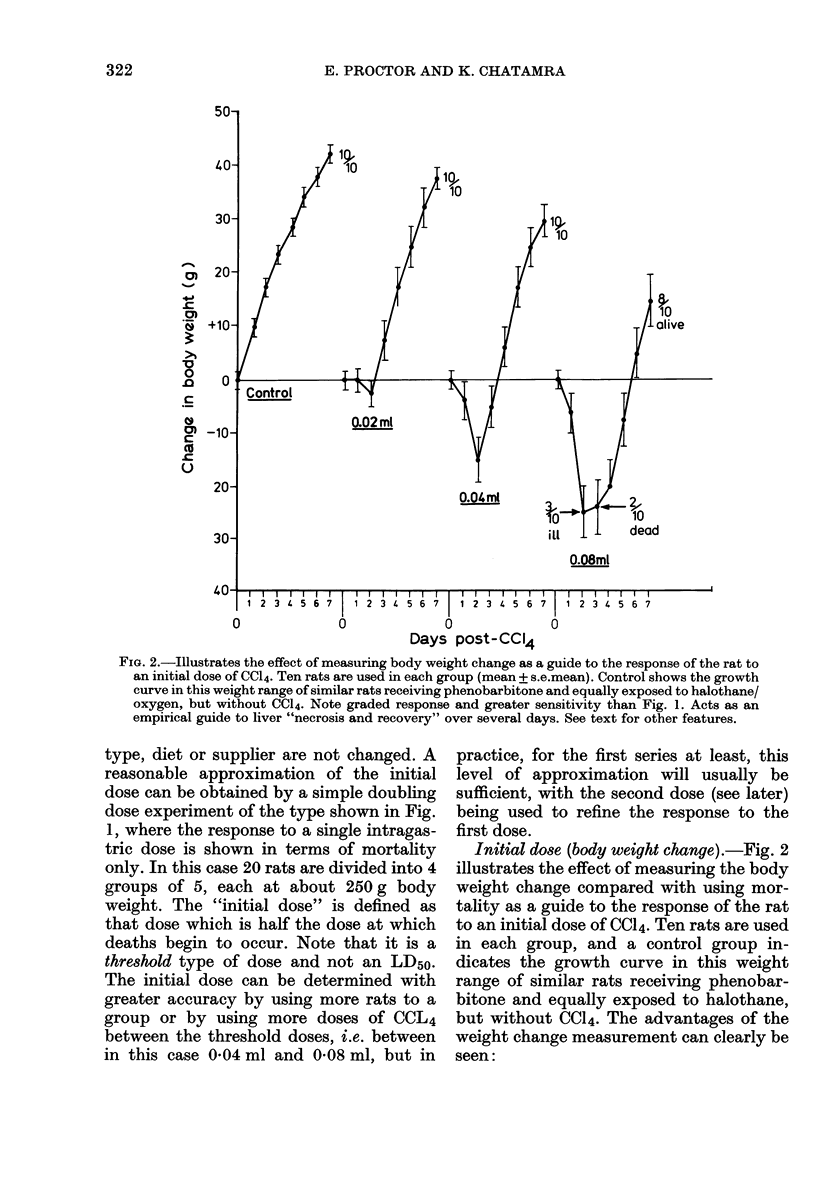
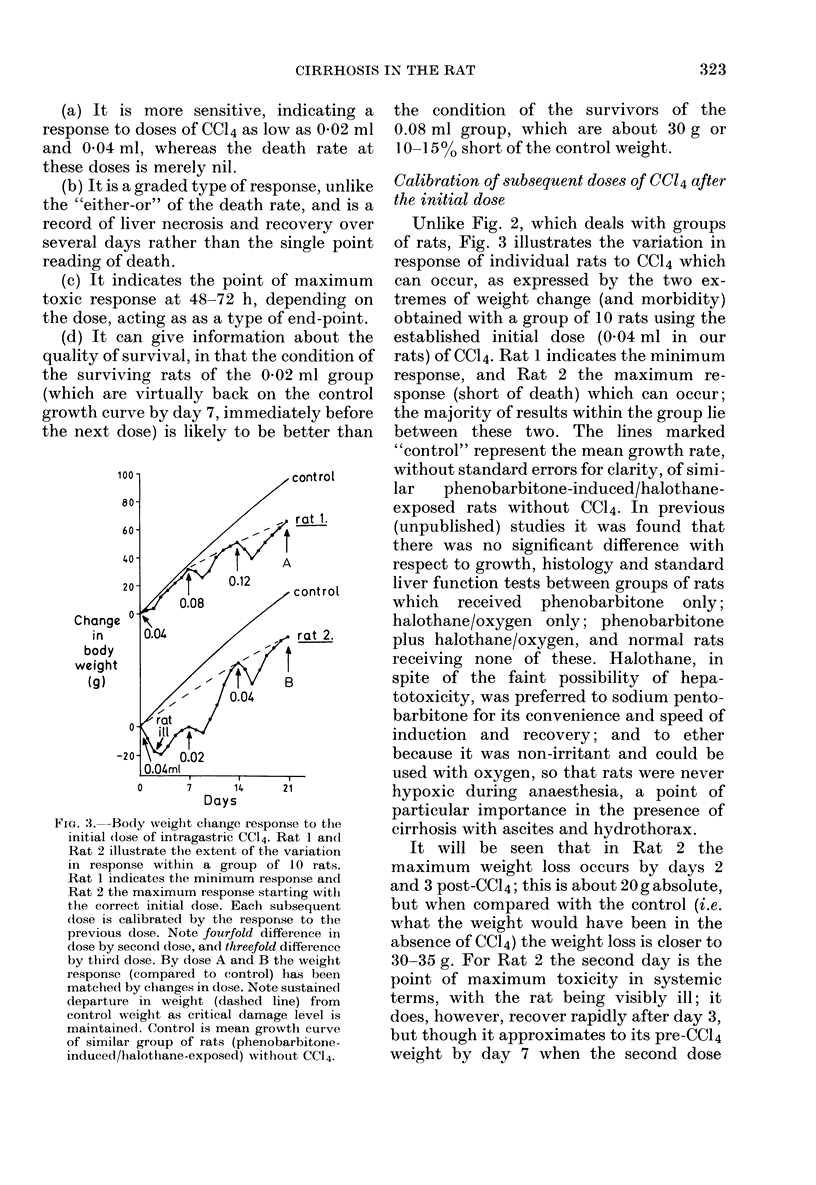
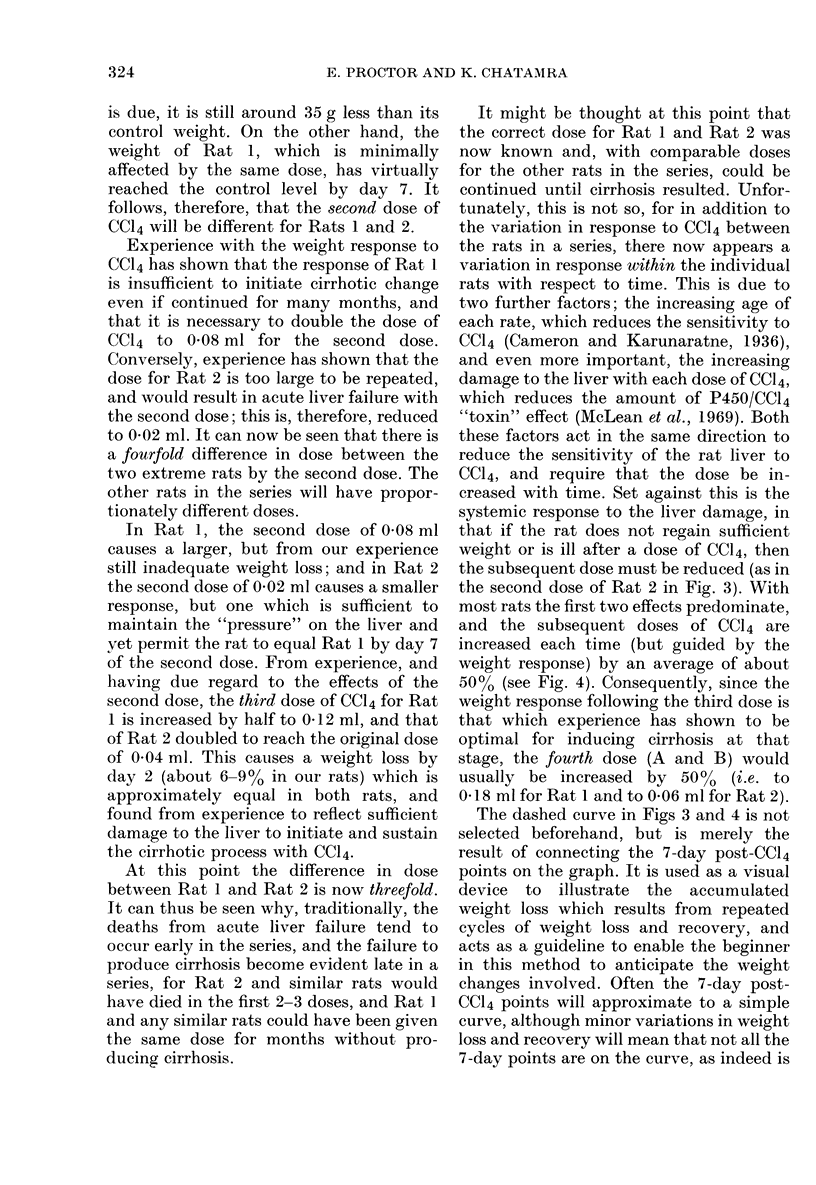
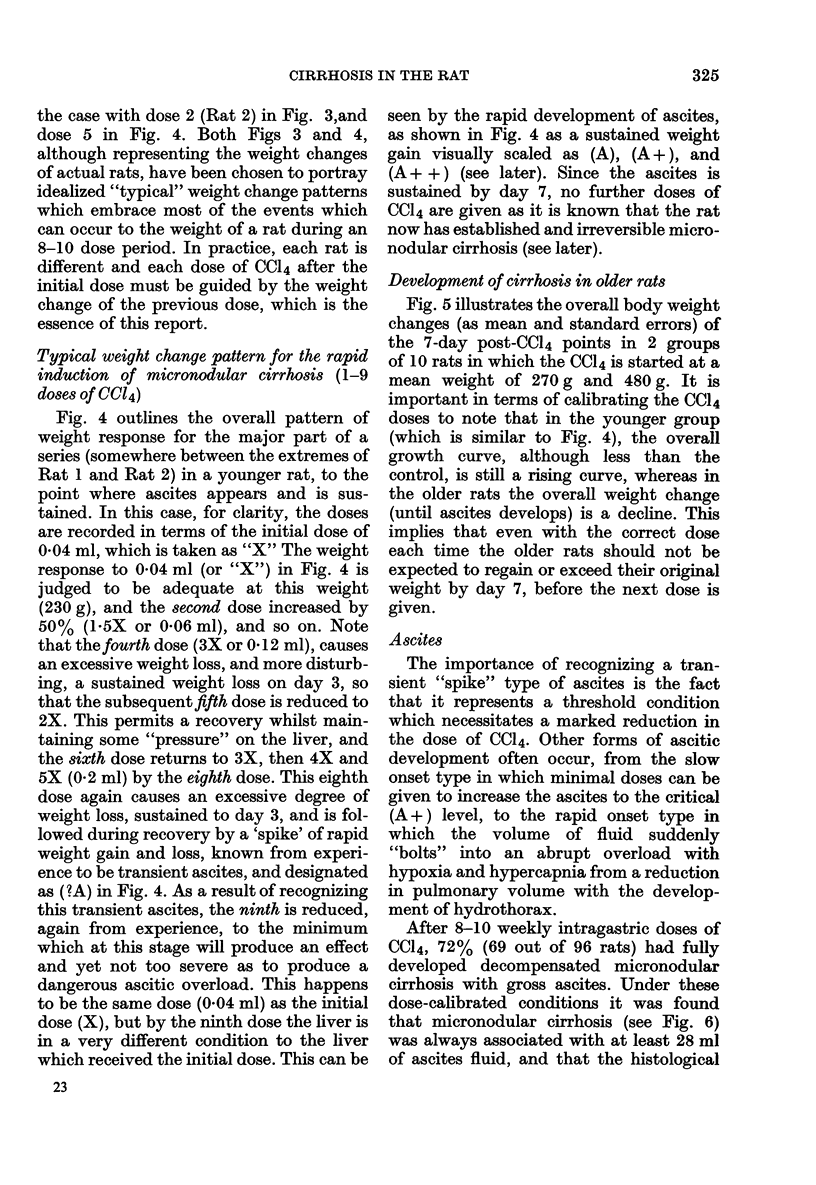
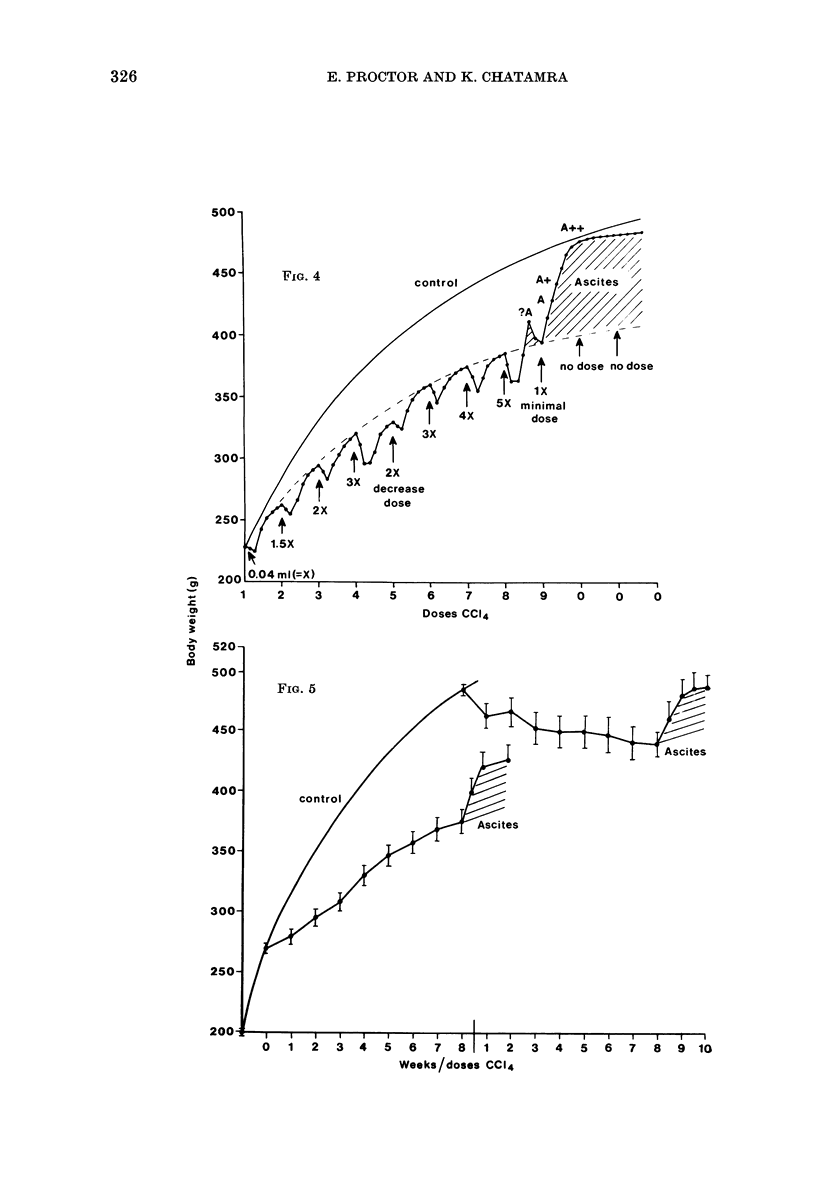
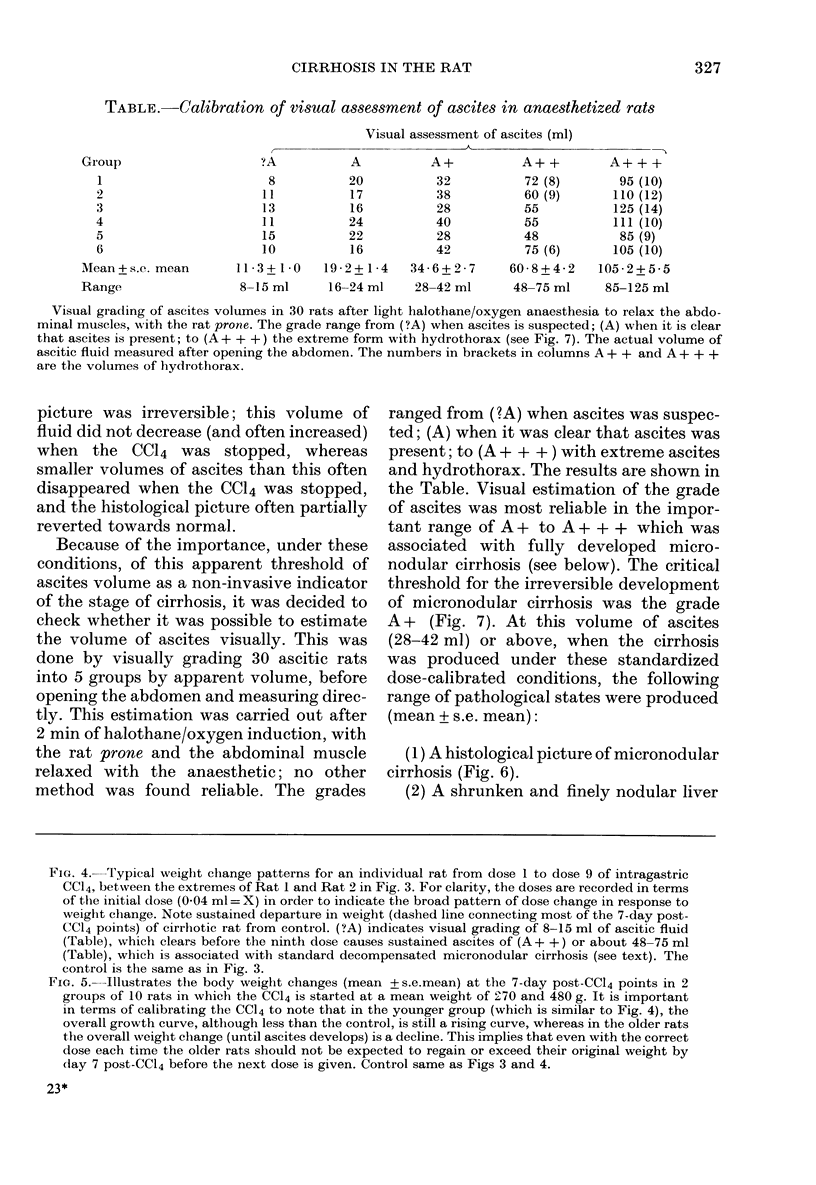
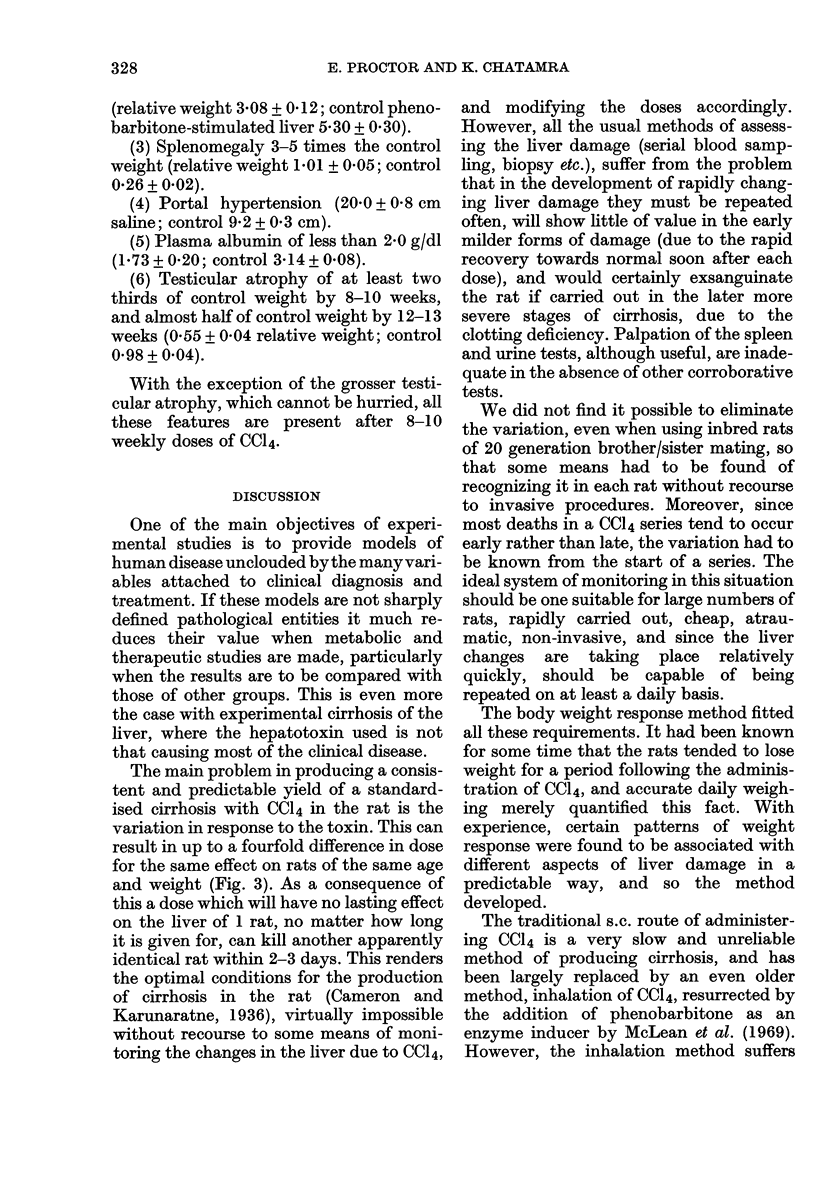
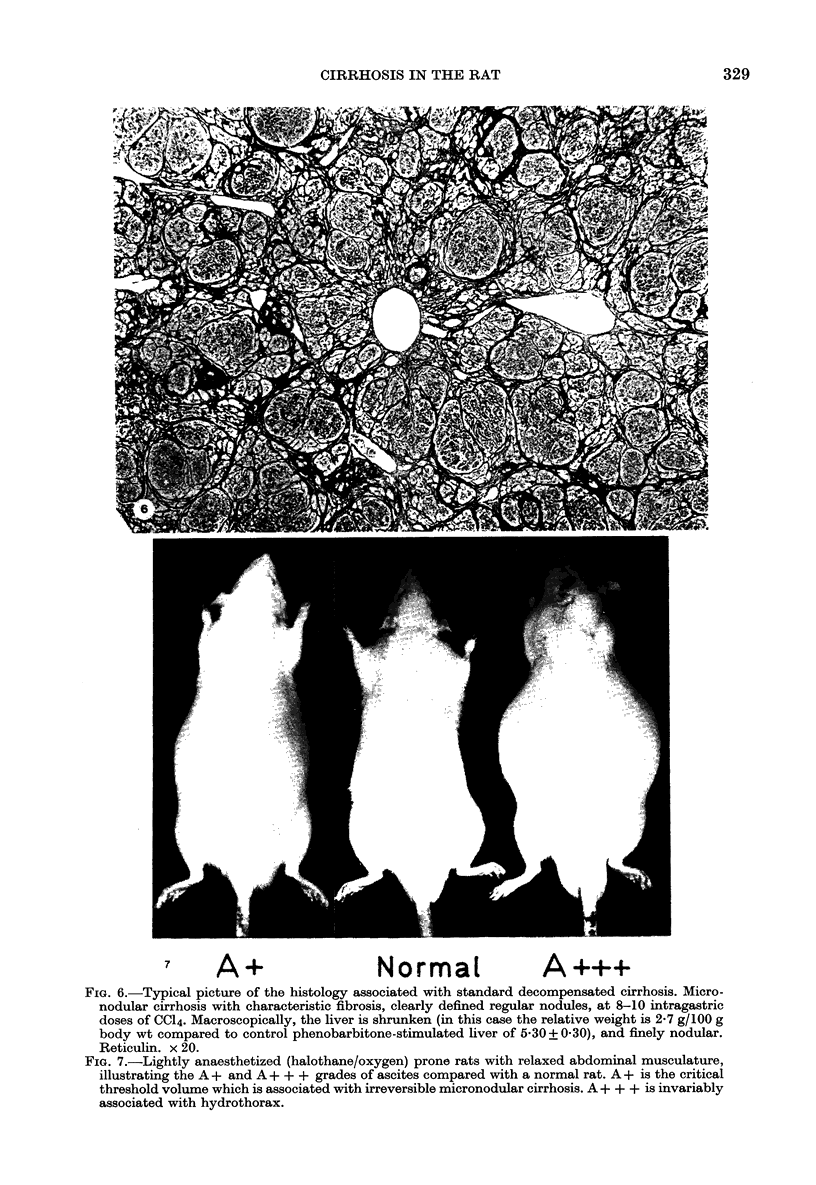
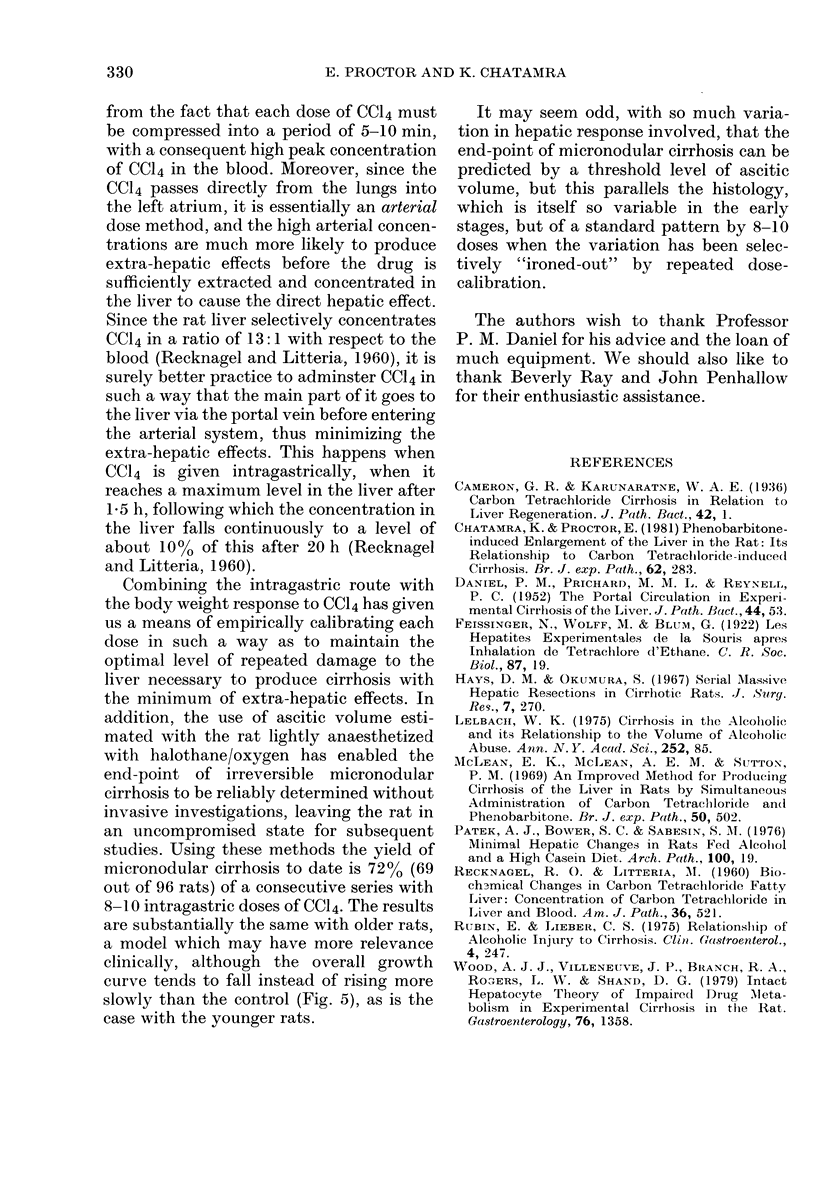
Images in this article
Selected References
These references are in PubMed. This may not be the complete list of references from this article.
- Chatamra K., Proctor E. Phenobarbitone-induced enlargement of the liver in the rat: its relationship to carbon tetrachloride-induced cirrhosis. Br J Exp Pathol. 1981 Jun;62(3):283–288. [PMC free article] [PubMed] [Google Scholar]
- DANIEL P. M., PRICHARD M. L., REYNELL P. C. The portal circulation in experimental cirrhosis of the liver. J Pathol Bacteriol. 1952 Jan;64(1):53–60. doi: 10.1002/path.1700640107. [DOI] [PubMed] [Google Scholar]
- Hays D. M., Okumura S. Serial massive hepatic resections in cirrhotic rats. Changes in in vitro growth of liver cells. J Surg Res. 1967 Jun;7(6):270–275. doi: 10.1016/0022-4804(67)90065-0. [DOI] [PubMed] [Google Scholar]
- Lelbach W. K. Cirrhosis in the alcoholic and its relation to the volume of alcohol abuse. Ann N Y Acad Sci. 1975 Apr 25;252:85–105. doi: 10.1111/j.1749-6632.1975.tb19146.x. [DOI] [PubMed] [Google Scholar]
- McLean E. K., McLean A. E., Sutton P. M. Instant cirrhosis. An improved method for producing cirrhosis of the liver in rats by simultaneous administration of carbon tetrachloride and phenobarbitone. Br J Exp Pathol. 1969 Oct;50(5):502–506. [PMC free article] [PubMed] [Google Scholar]
- Patek A. J., Jr, Bowry S. C., Sabesin S. M. Minimal hepatic changes in rats fed alcohol and a high casein diet. Arch Pathol Lab Med. 1976 Jan;100(1):19–24. [PubMed] [Google Scholar]
- RECKNAGEL R. O., LITTERIA M. Biochemical changes in carbon tetrachloride fatty liver: concentration of carbon tetrachloride in liver and blood. Am J Pathol. 1960 May;36:521–531. [PMC free article] [PubMed] [Google Scholar]




